Every business has a people management model of responsibilities and oversight. The duties are split out into departments, managers, teams, individuals, until all of the tasks are assigned between production and oversight, and compensation plans are issued based on the division of duties.
But have you ever considered what behaviors your people model is actually promoting?
I think the structure of property managers is one of the best examples of incentivizing bad behaviors unknowingly….
Let’s say you operate property management for a 400-unit apartment building. You have a sales team of 5 people actively renting units. Like most sales positions, these 5 people receive commissions on each unit rented (standard industry practice).
For easy math, let’s say they are all equal performers and each unit rents for $1600.00. Commissions are 1-month’s rent.
- If all 400 tenants do not renew their lease, each sales person will receive 80 commissions of $1600.00 for a total of $128,000.
- If half of the tenants renew their lease, each sales person will receive 40 commissions of $1600.00 for a total of $64,000.
- If 20% of tenants do not renew their lease, each sales person will receive 16 commissions of $1600.00 for a total of $25,600.
With a commission structure like this, what are the resulting behaviors?
Most people look at this commission structure and think it will incentivize the sales people to fill vacant apartments, but they fail to realize that it will ALSO incentivize them to compromise relationships with existing tenants to discourage lease renewals. It is simple math really: they make more money when tenants leave.
A friend of mine owns apartment buildings and personally manages them for this very reason. Property management companies have a business model that inadvertently encourages vacancy.
This was validated after speaking with property management companies who are happy when their buildings have an average of 80% occupancy. This is a stark contrast to the owner self-managing his buildings who sees red flags waving if a building hits 2% vacancy!
Let’s look at the numbers for a moment.
If we apply these vacancy ideas to our previous building example, the annual revenue at 80% occupancy will be $6,144,000. The annual revenue at 98% occupancy is $7,526,400. This is just shy of 1.4 MILLION DOLLARS in lost revenue due to vacancy.
So what did the property owner do differently?
The self-managed property did not pay the staff on direct rental commissions. They were paid a healthy salary and bonused on total occupancy quarterly. He could pay his people really well because he only needed 2 of them rather than 5. Those 2 people made keeping the current tenants happy their top priority because it was far less work keeping tenants then it was replacing tenants.
This team made more money with far less effort.
From a profit perspective, the financial gap is enormous…
I realize I threw a variety of numbers out in these examples, but think for a moment about the cost associated with the bad people model:
- Requires at least double the staff
- Behaviors used to encourage tenant turnover also affect the future health of the business from bad reviews, negative word of mouth, and no referrals.
- Unhappy tenants are more likely to behave disrespectfully causing more facility damage and uncleanliness.
- The work culture becomes negative, hostile, and cut throat.
- With profits compromised, the general health of the business becomes questionable, creating uncertainty and instability.
Obviously, this is one example of how your people structure can impact your business, but the results can be staggering.
What behaviors do you promote with your people structure?

